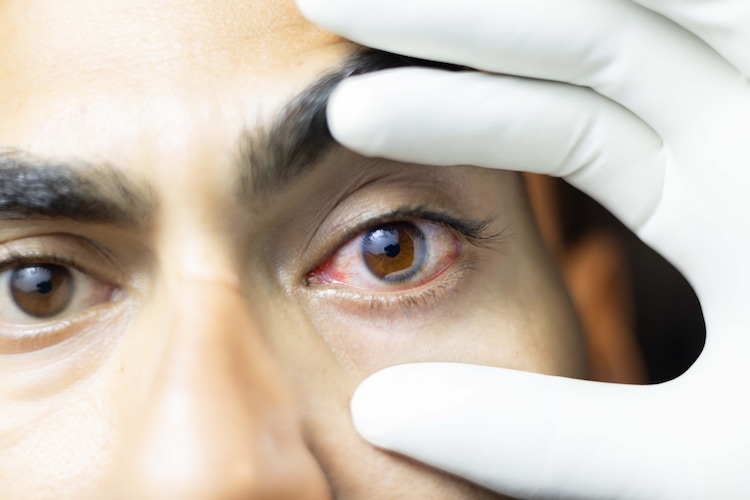India’s corneal blindness crisis: Rural areas face shortage of eye care
Corneal blindness, a leading cause of vision loss in India, is on the rise with 20,000 to 25,000 new cases annually, particularly affecting rural areas due to limited health care access and donor shortage.

in short
- Corneal blindness is a leading cause of vision loss in India
- It is induced by infections, eye injuries and vitamin A deficiency.
- About 12 lakh people in the country are affected by this.
Corneal blindness, a leading cause of vision loss in India, is seeing an alarming rise, with an estimated 20,000 to 25,000 new cases being reported annually.
Corneal blindness is vision loss caused by damage or injury to the cornea, the transparent outer layer of the eye. This can be due to infection, injury and deficiencies like vitamin A.
It progresses without timely treatment, often leading to irreversible blindness, especially in deprived areas with limited eye care resources and donor corneas.
This significant burden is borne by experts in rural areas, where access to quality eye care is limited.
According to Dr. Smit Bavaria, cataract surgeon, Dr. Aggarwal Eye Hospital, Mumbai, corneal blindness accounts for about 7.5% of India’s total blindness burden, with rural areas disproportionately affected.
“The causes have shifted from infectious diseases like keratitis to eye trauma and complications, but the impact remains substantial, especially in underserved areas,” Dr. Bavaria said.

If left untreated, keratitis can progress from mild irritation and redness to severe corneal lesions and vision loss, he said.
Dr. Preeti Naveen, senior cornea and refractive surgeon at Dr. Agarwal Eye Bank in Chennai, highlighted the scale of the issue.
“Corneal blindness affects about 1.2 million people in India. Factors such as infections, eye injuries and vitamin A deficiency worsen the condition. Poor hygiene, delays in medical intervention and limitations in health care access, especially in rural areas, further exacerbating the problem.” Dr. Naveen said.
The demographic populations most vulnerable to corneal blindness include children and working-age adults in rural areas, who are often at risk for malnutrition, frequent eye injuries, and limited health care access.
Elderly individuals are also at risk due to degenerative eye conditions. Highlighting the need for early diagnosis and intervention, doctors said an estimated 1 to 2% of the country’s population is at risk of developing corneal blindness.
Dr. Naveen also elaborated on the diagnostic advancements in India, “Current diagnostic methods include comprehensive eye examination, visual acuity testing and slit-lamp biomicroscopy to identify conditions such as keratitis and scarring. Advanced Imaging Techniques such as anterior segment optical coherence tomography (AS-OCT) and corneal topography provide detailed evaluation for accurate diagnosis.”

He said corneal transplants are an effective treatment for people who do not have underlying health problems such as diabetes, although access to such treatments is limited due to the limited donor supply.
However, the challenges are multidimensional.
Dr. Sanjana Vatsa, a cornea and refractive surgeon from Bengaluru, pointed to health care disparities and lack of resources.
Dr. Vats said, “Many patients in rural areas lack quality eye care, resulting in irreversible corneal damage before they get help. Additionally, corneal conditions cannot be effectively managed and treated.” There is a significant gap in training and resources for health care providers to do this.”
The problem is further compounded by the shortage of cornea donors, with only 25,000 to 30,000 donations annually, while the need for transplants is approximately 200,000.

Experts said socioeconomic factors such as poverty and malnutrition further increase the risk of corneal blindness, making it difficult to implement comprehensive prevention strategies.
Dr. Vatsa advocates a multi-pronged approach to address this growing health challenge. “Raising awareness about eye health at the individual level and encouraging regular eye check-ups can lead to early detection and intervention,” he said.
Doctors suggested that programs focusing on eye health education, cornea donation and nutritional support, especially vitamin A supplementation for vulnerable populations, could reduce the prevalence of cornea-related issues.
With demand for eye care resources and cornea donation exceeding supply, experts stressed that government-supported initiatives and community-based programs can help provide health care access in both urban and rural areas.


